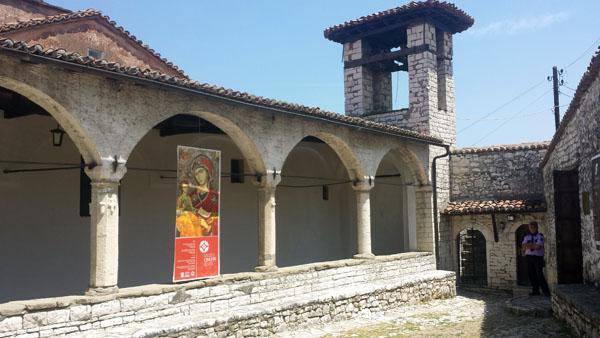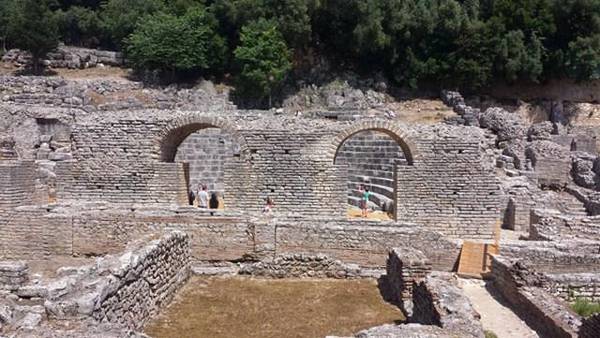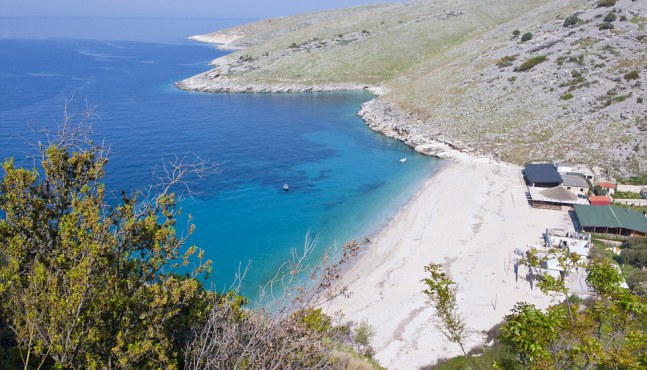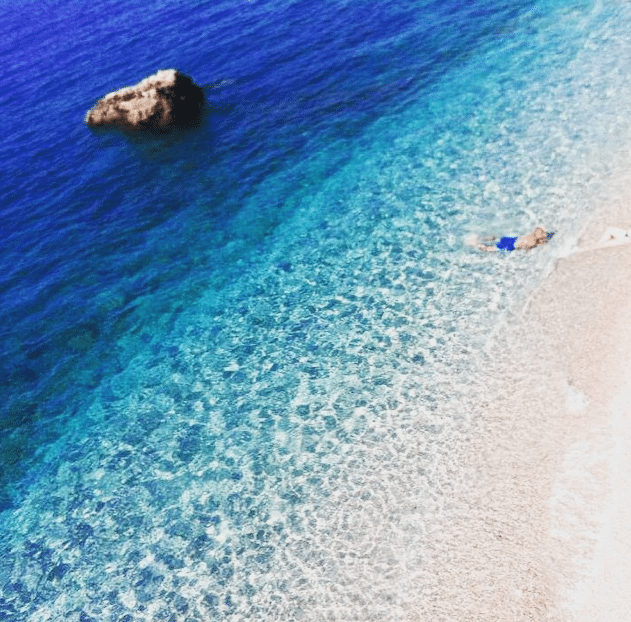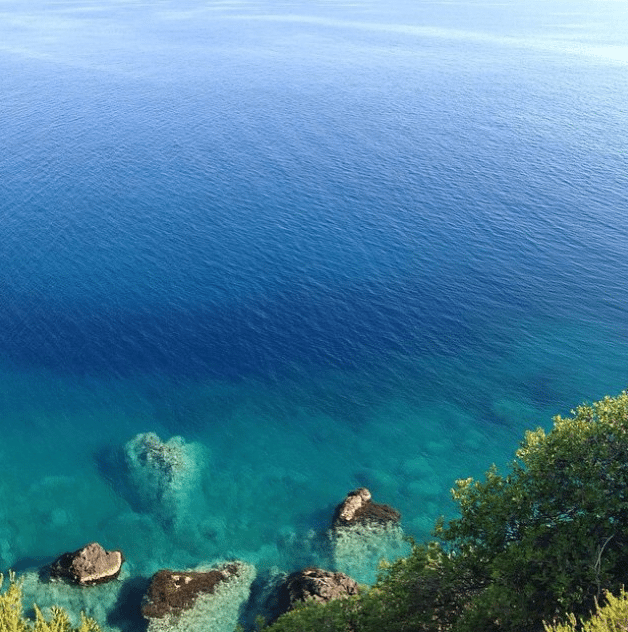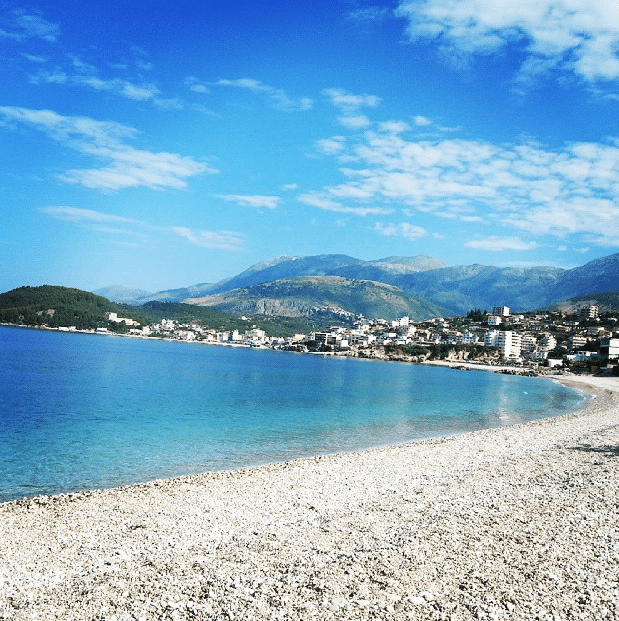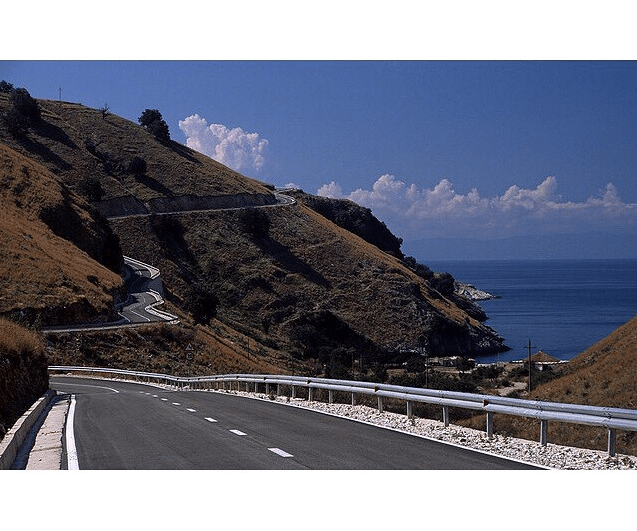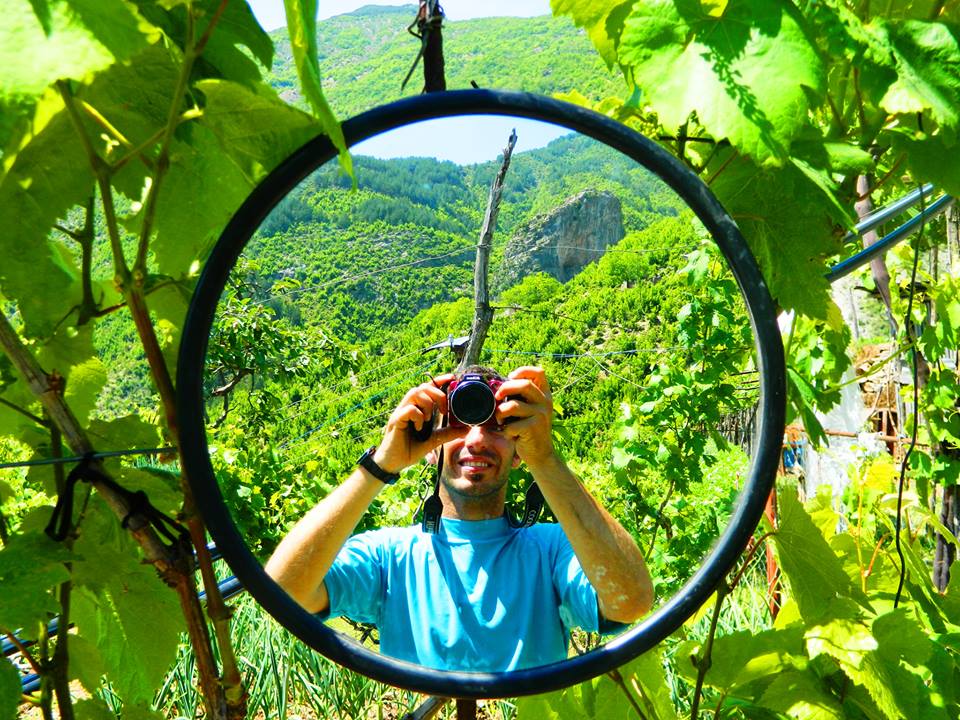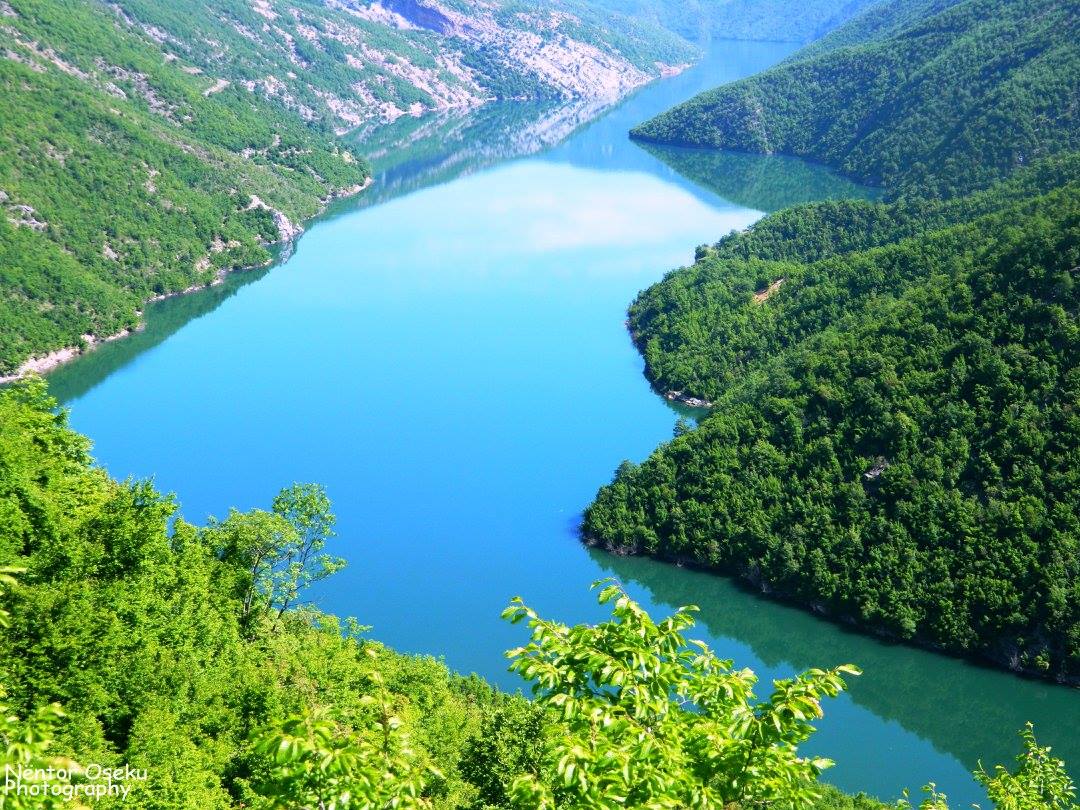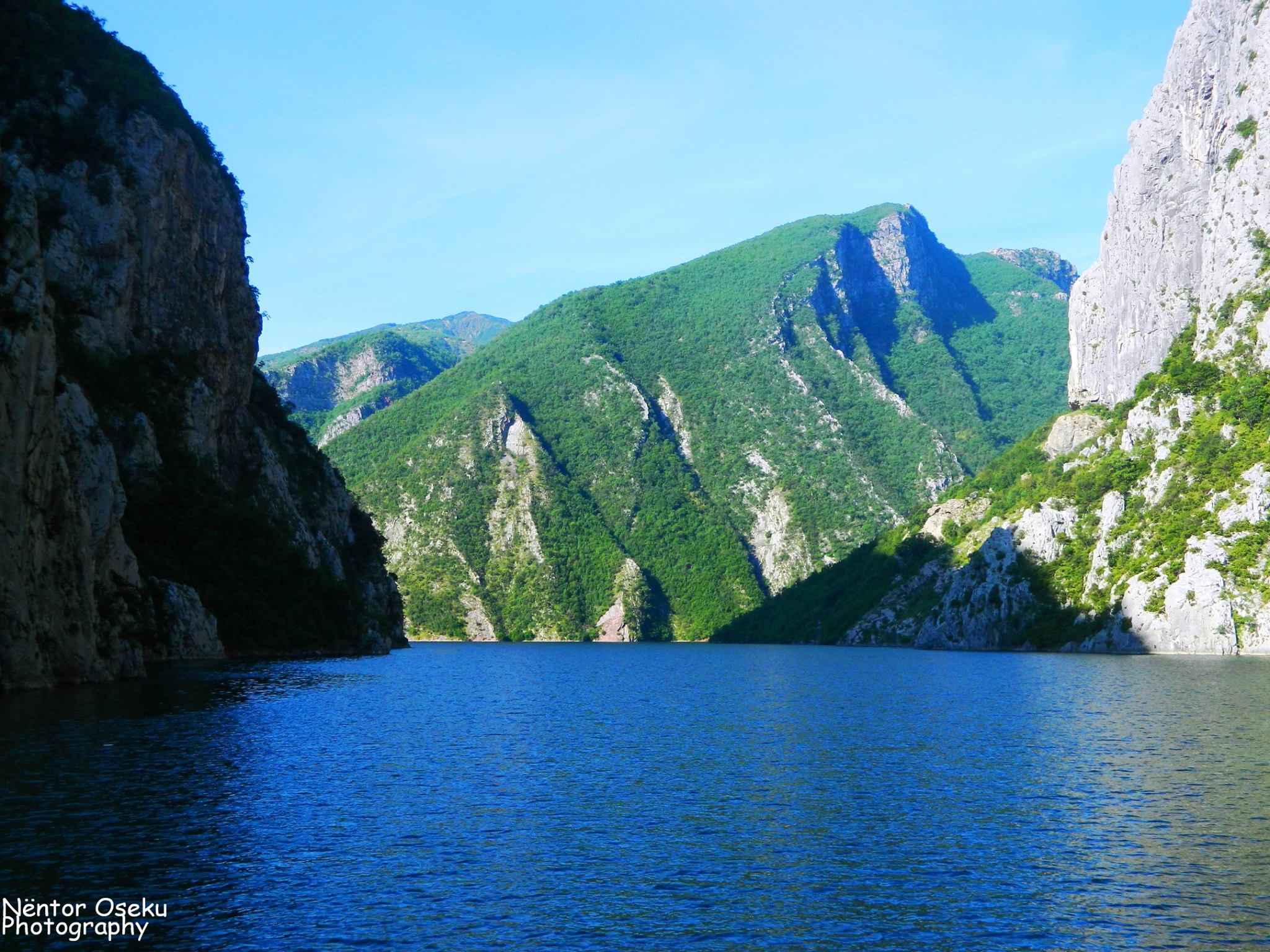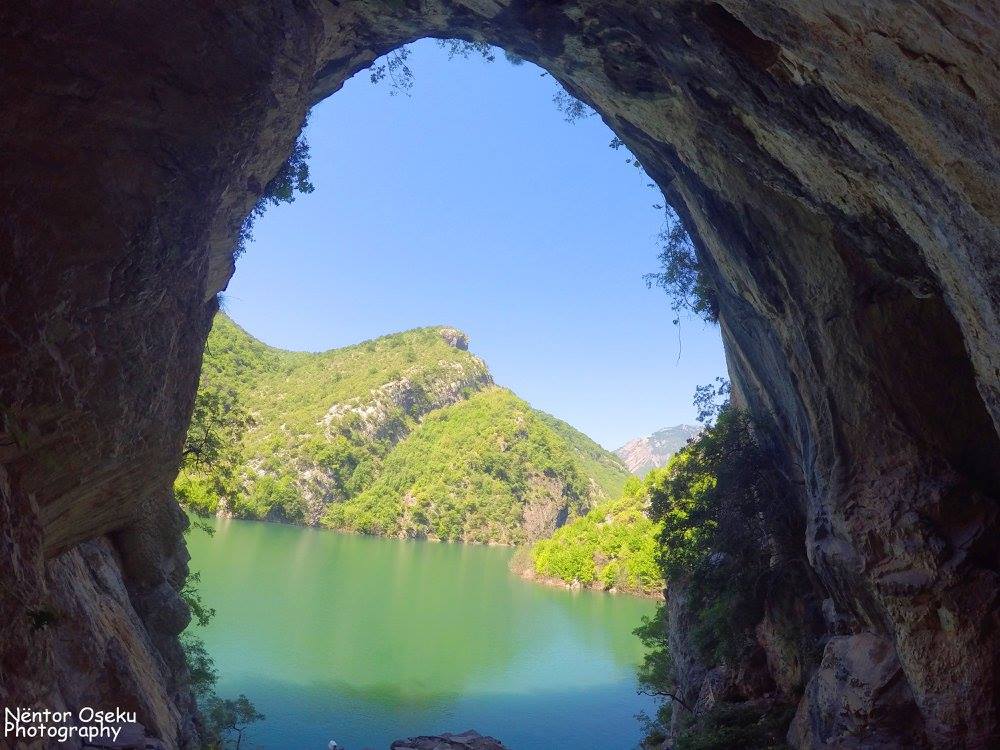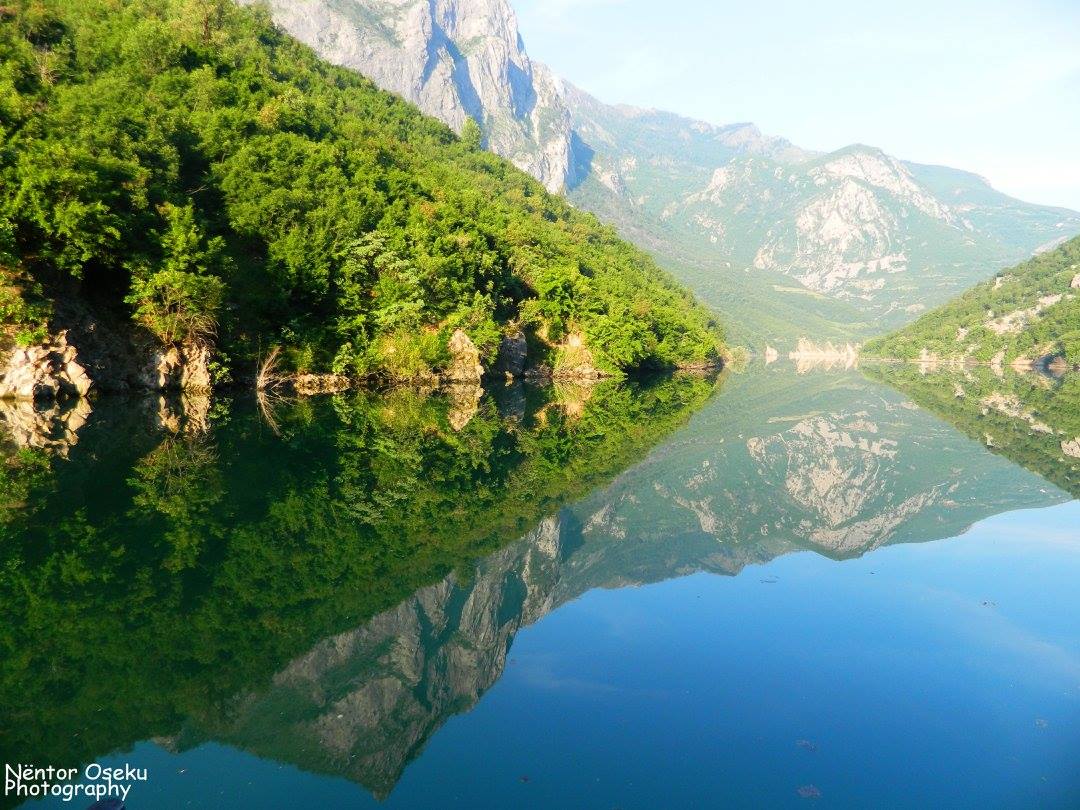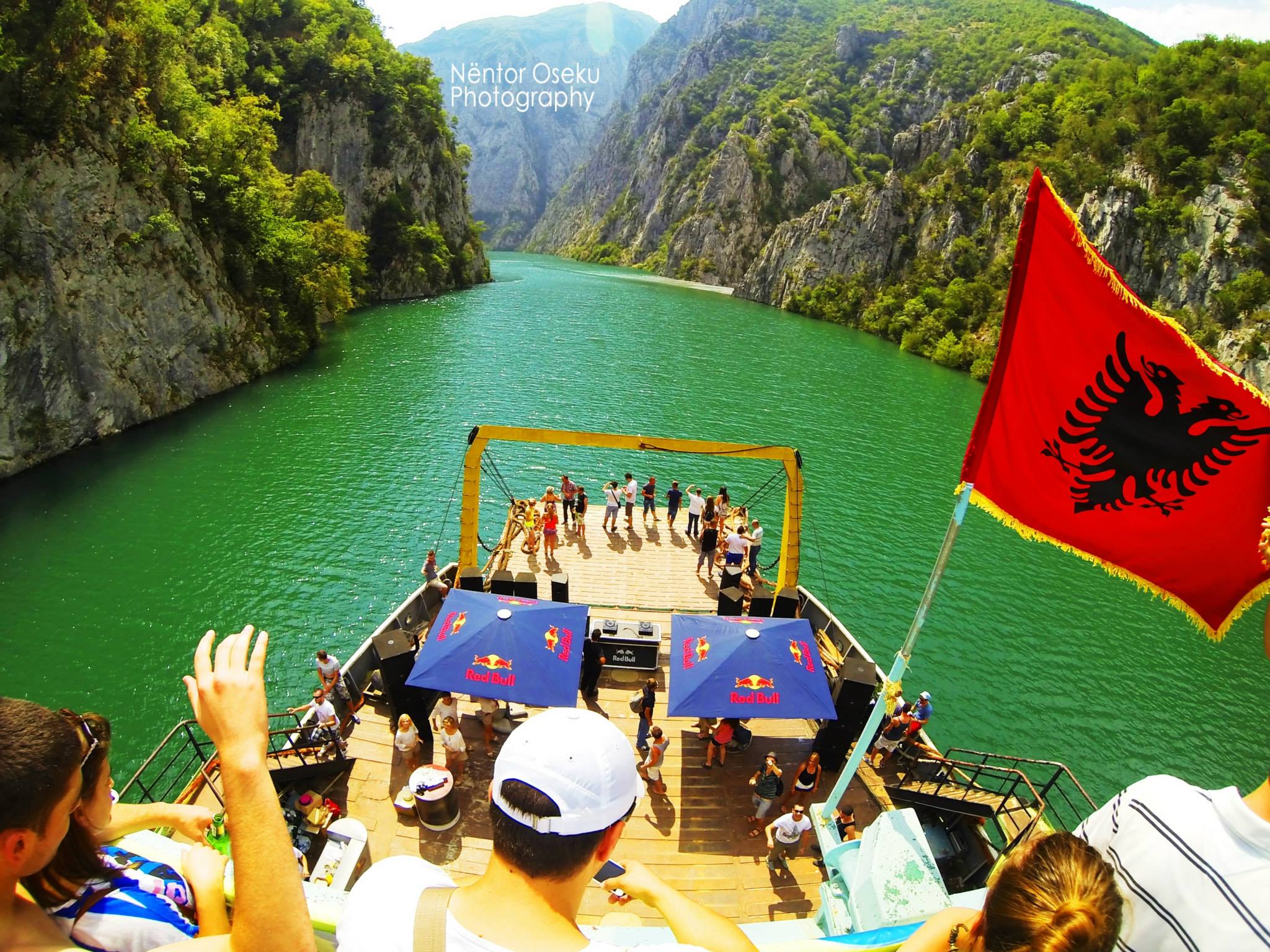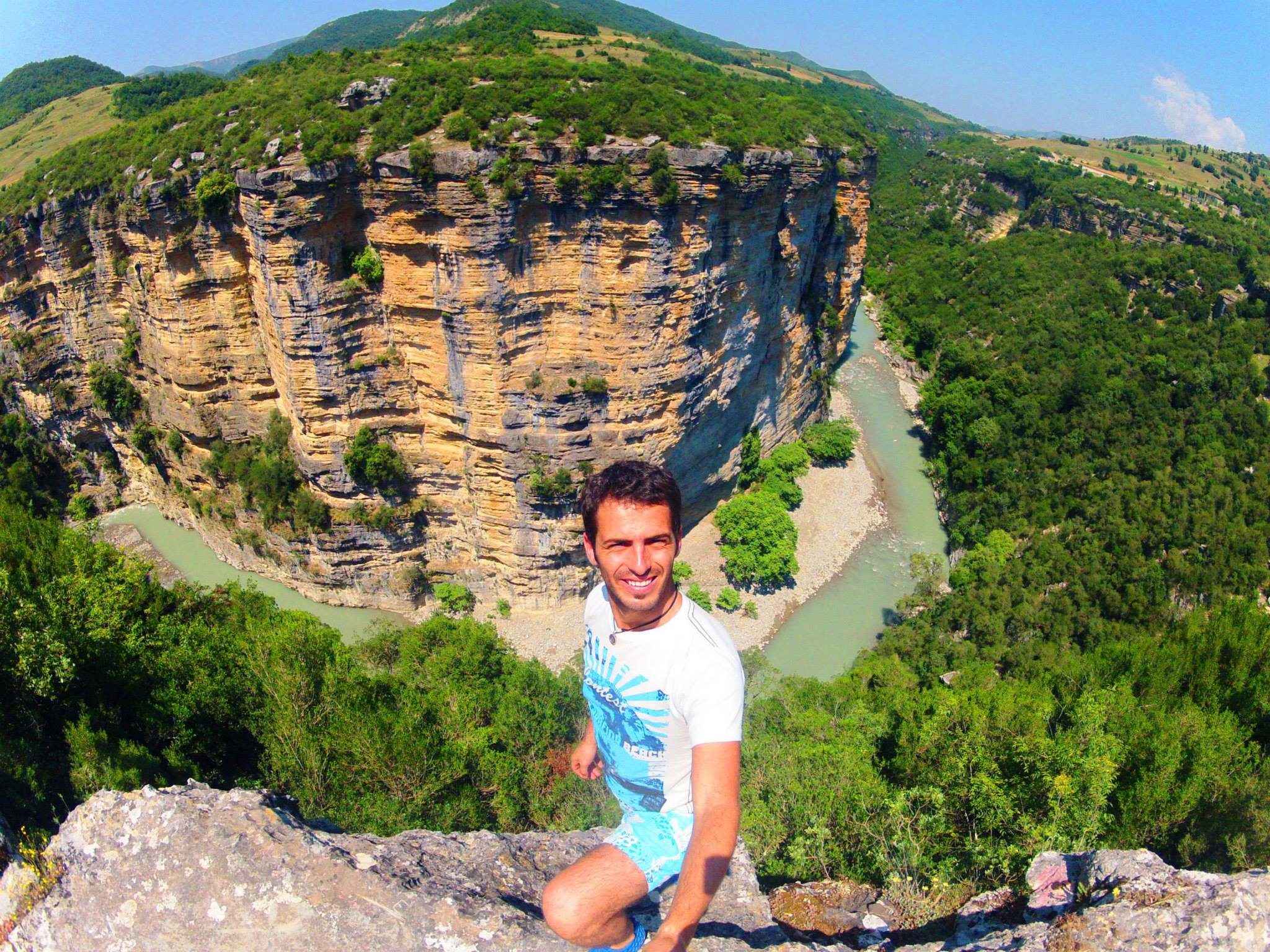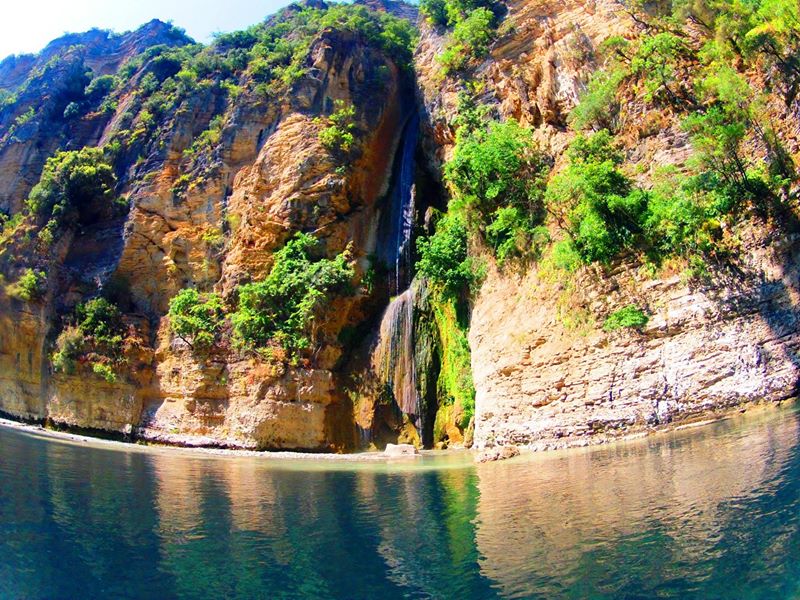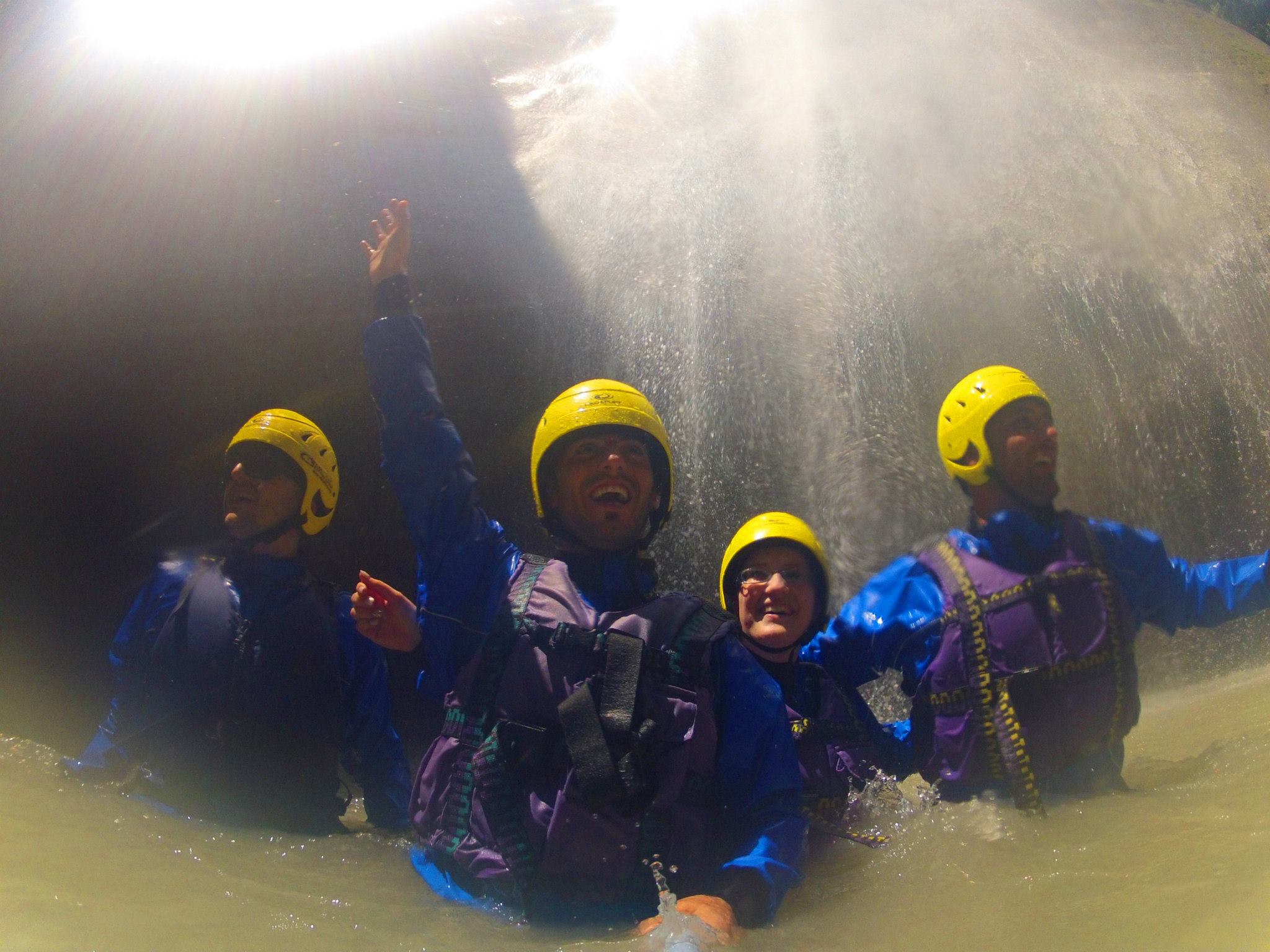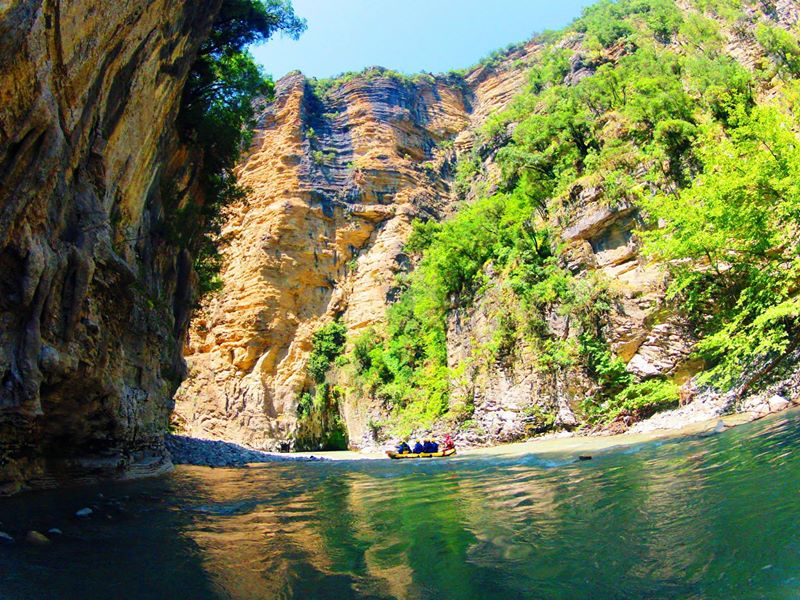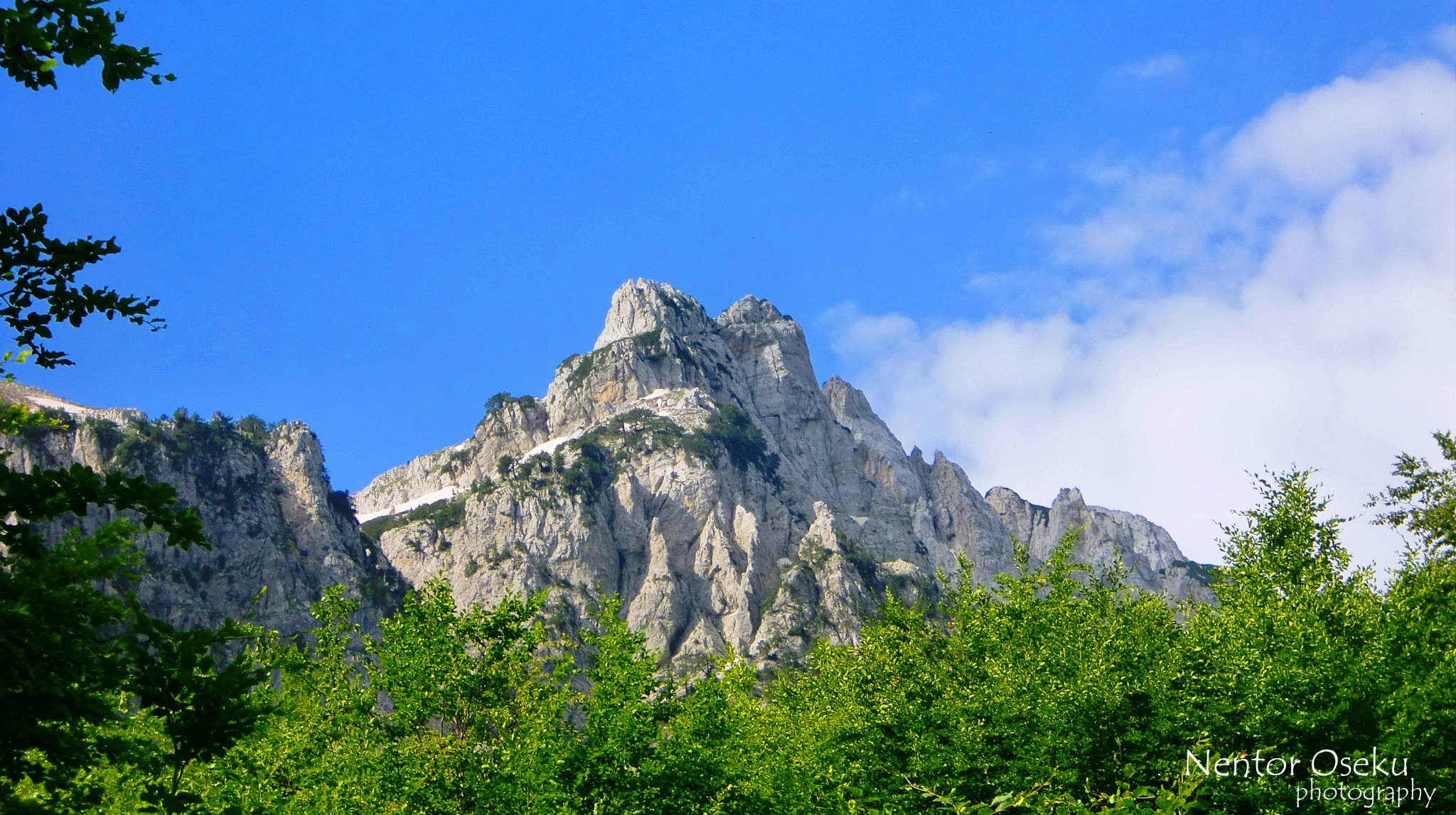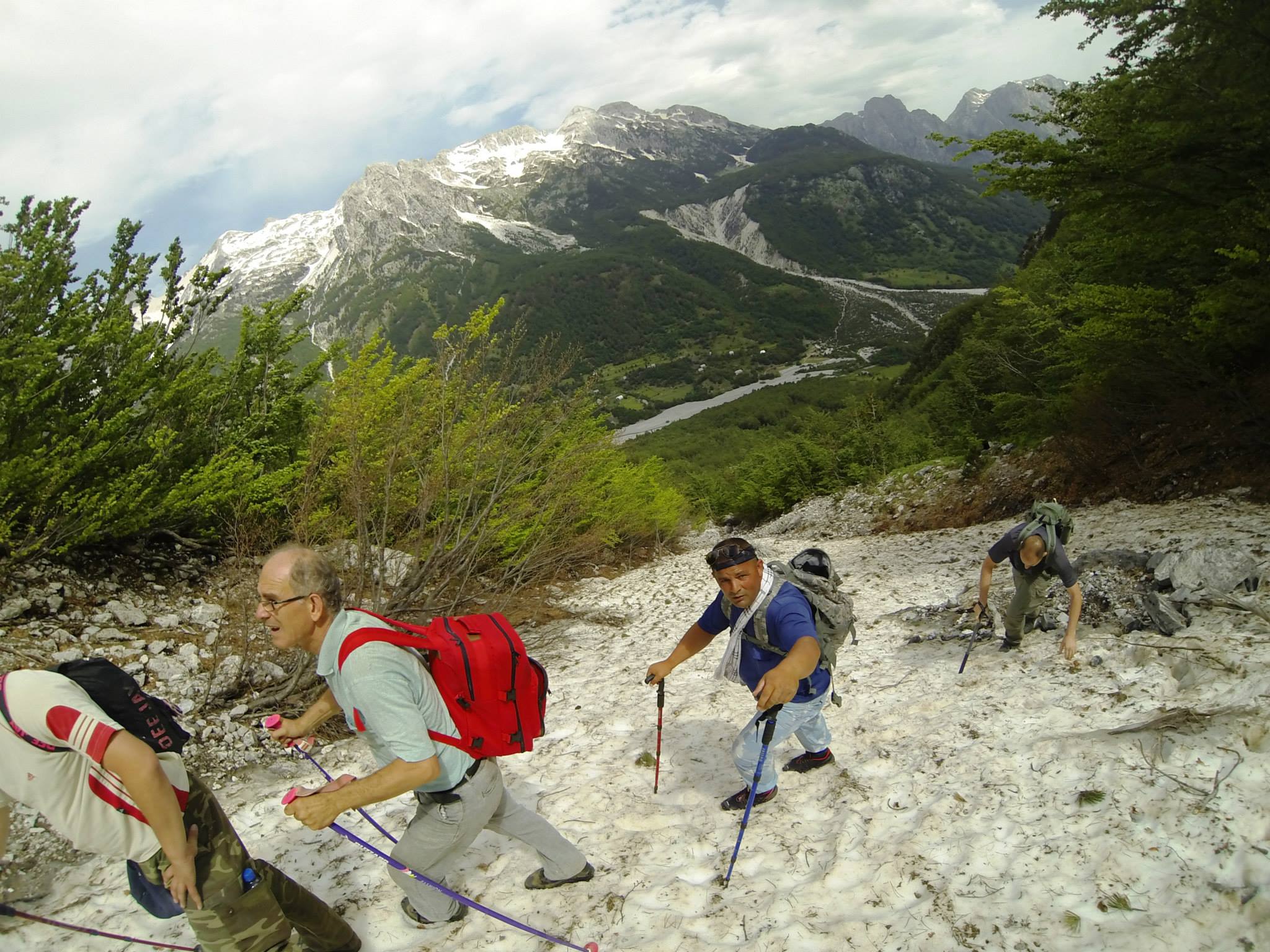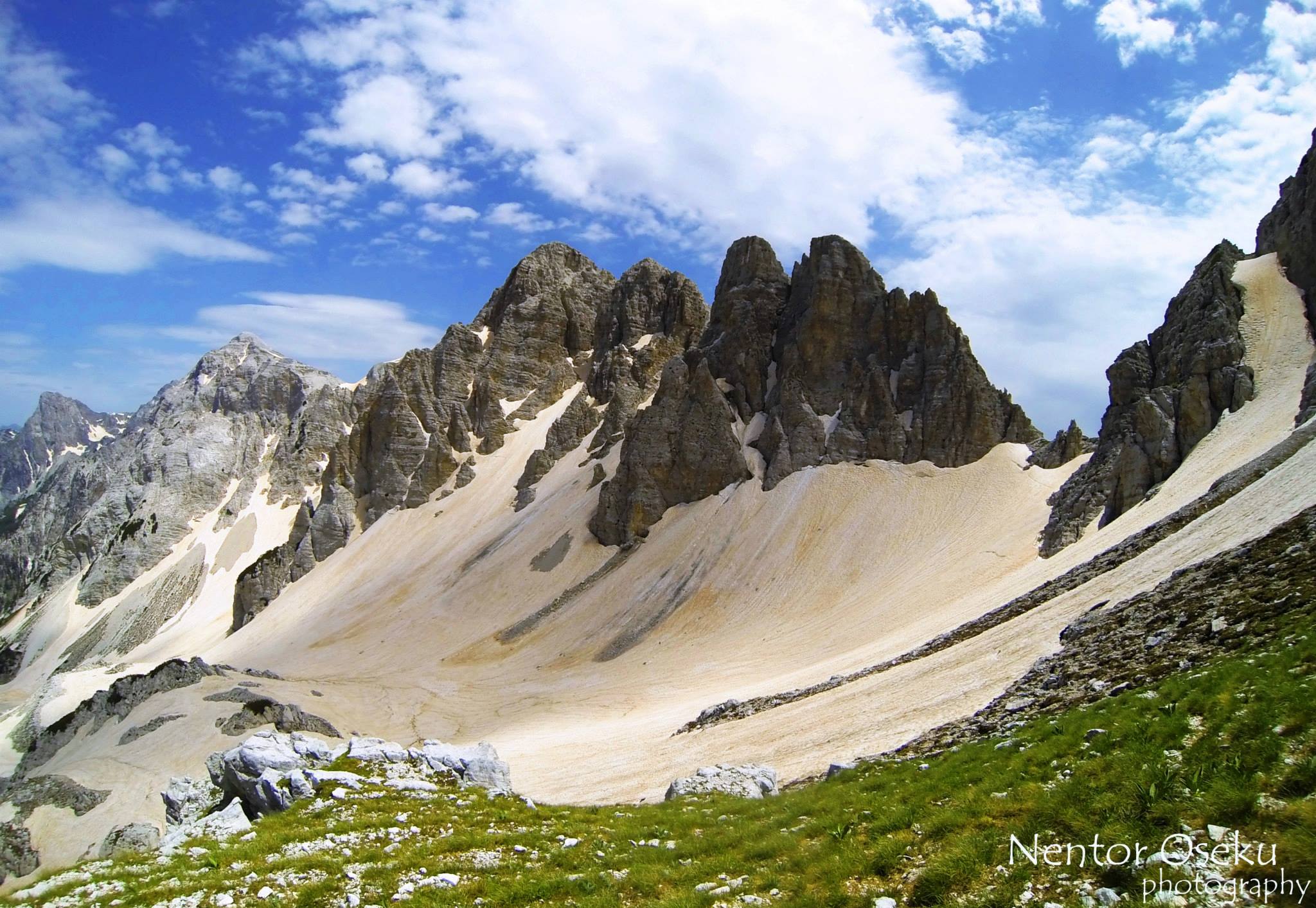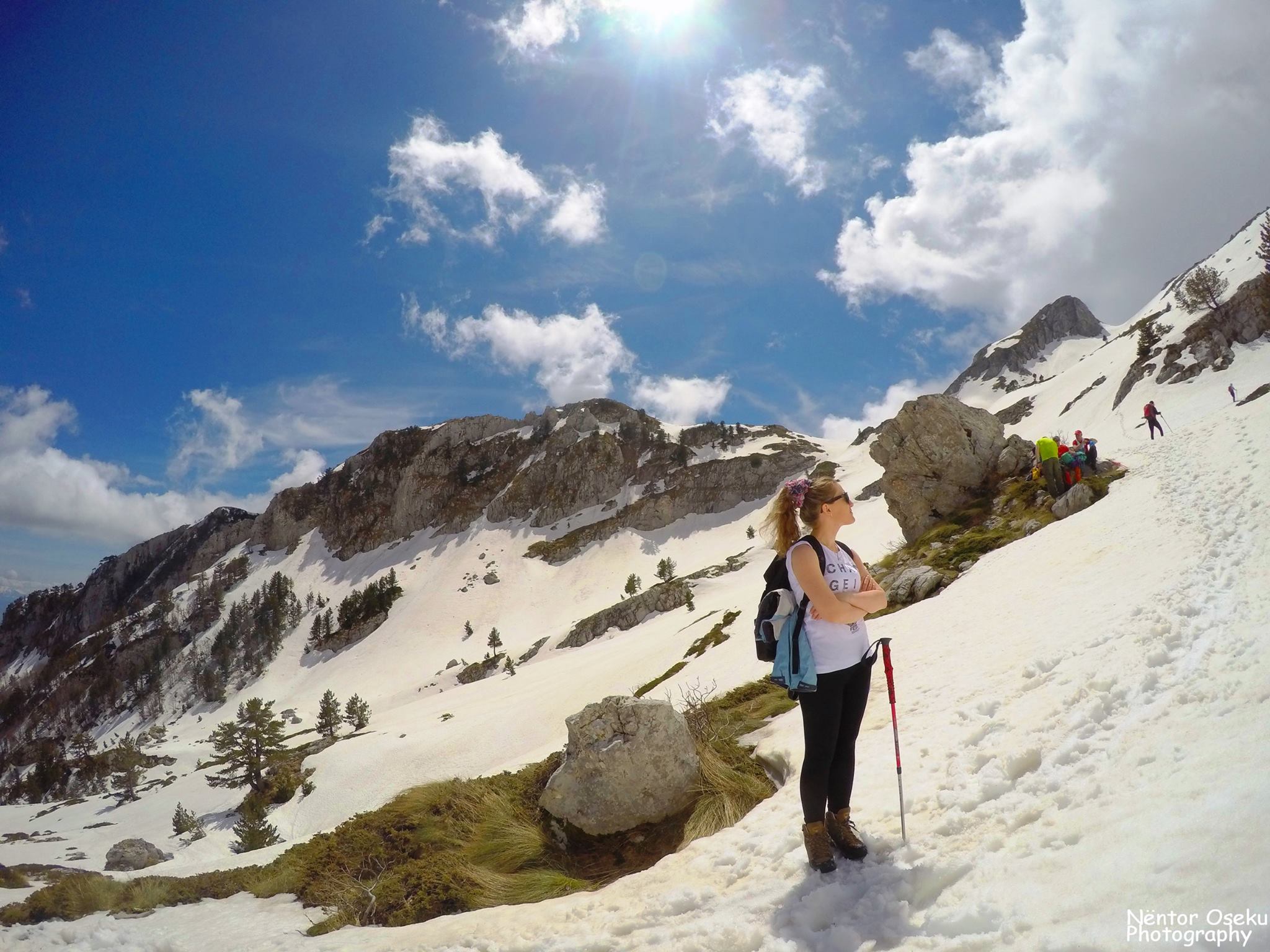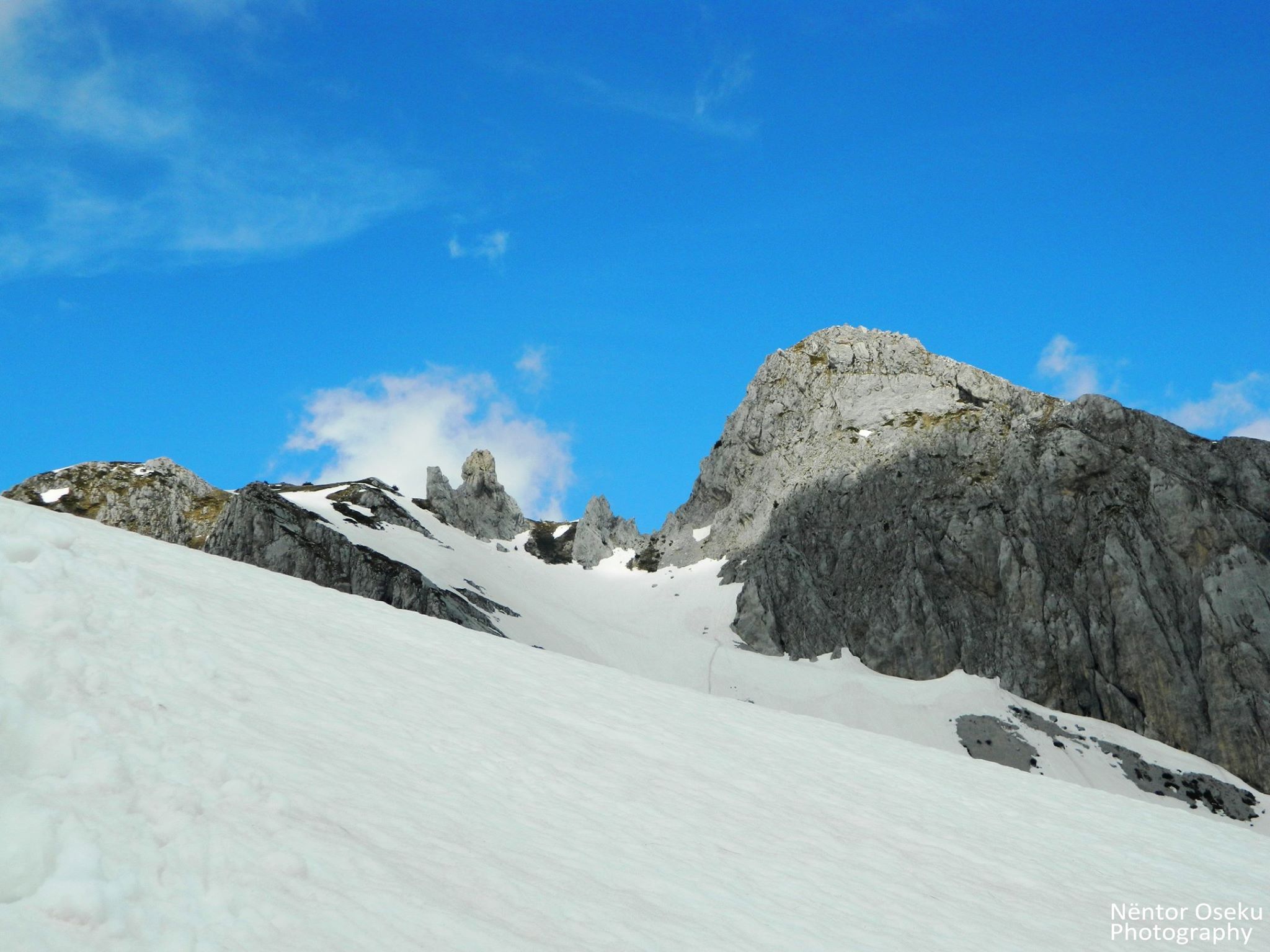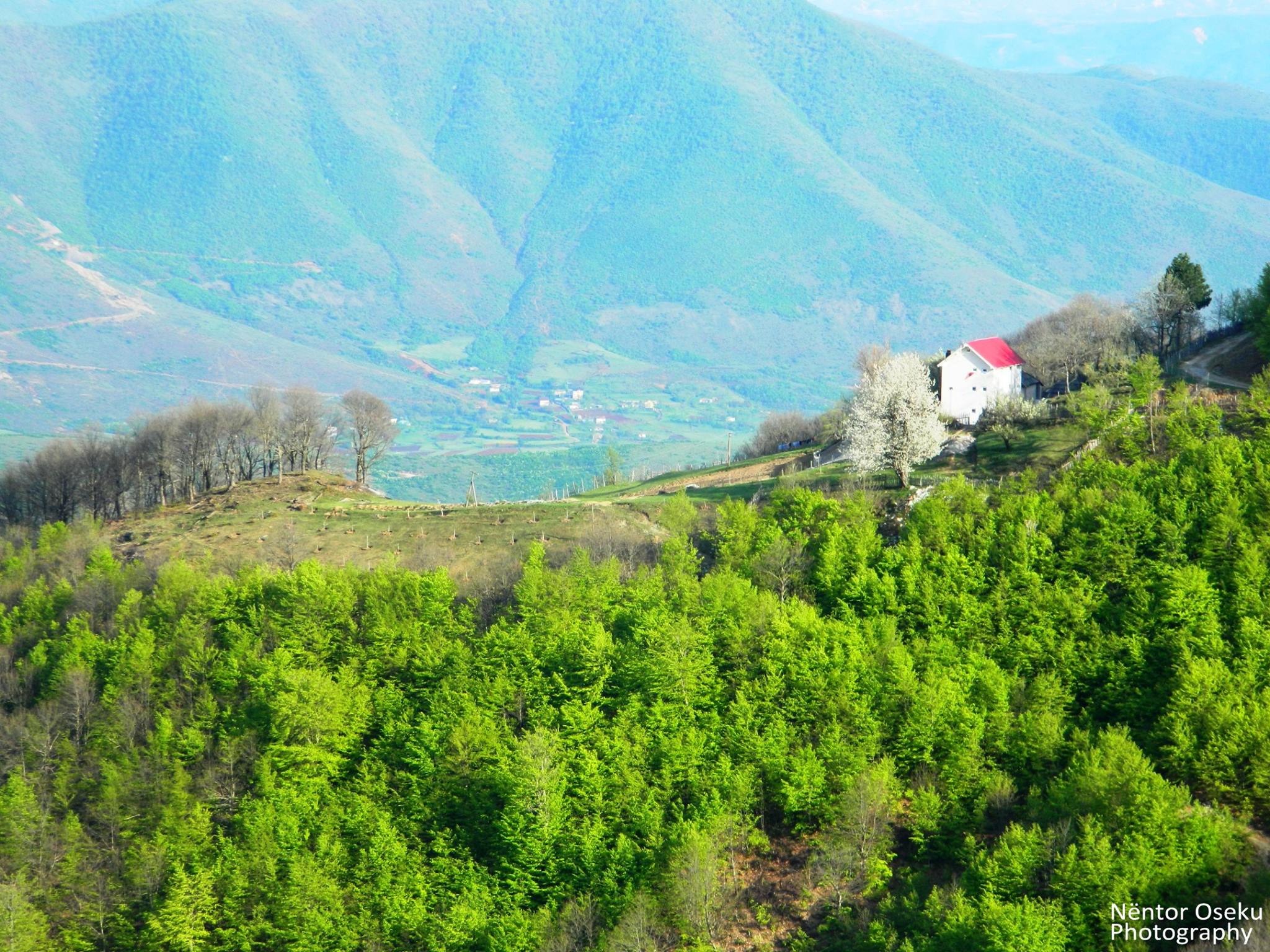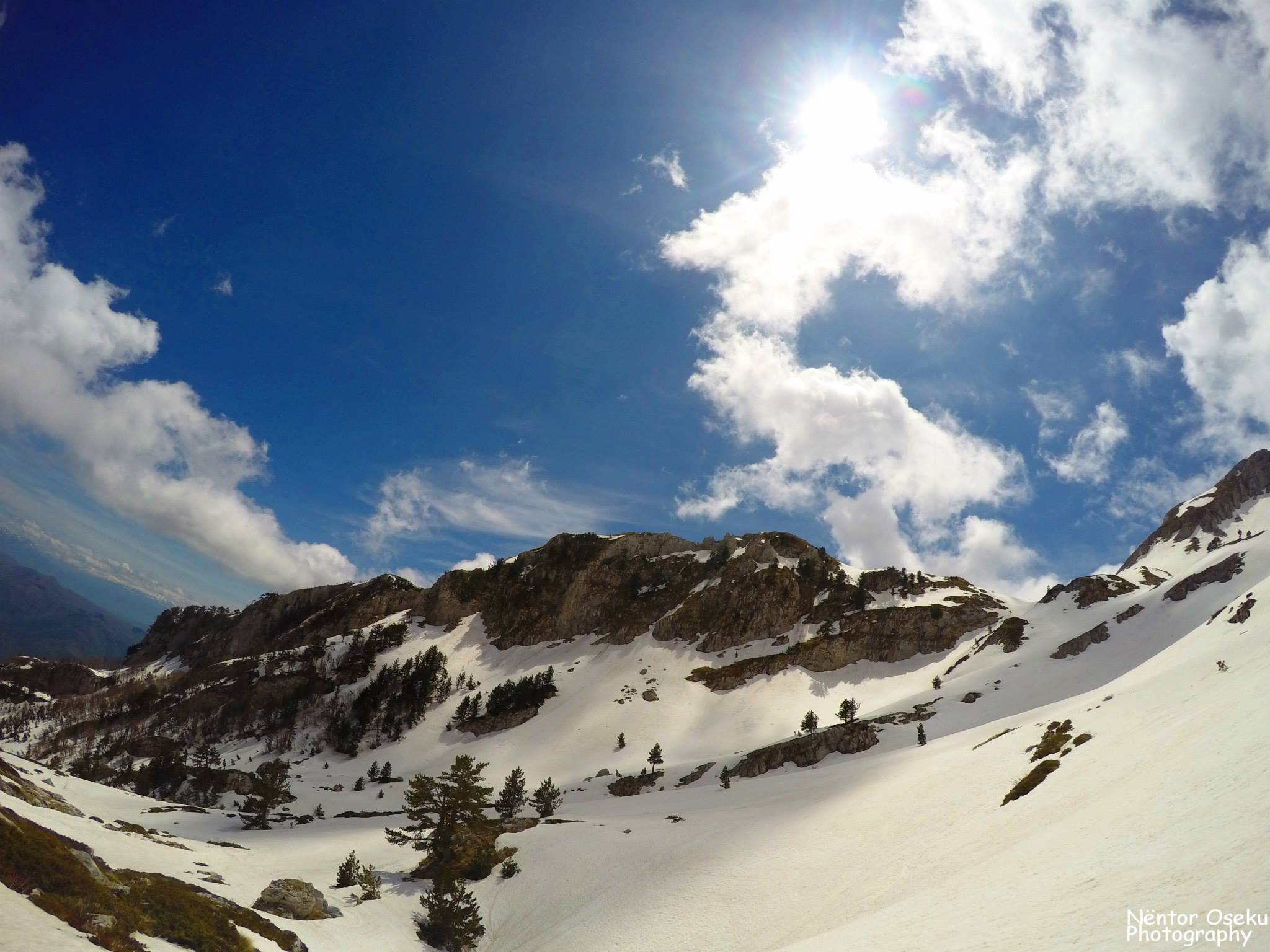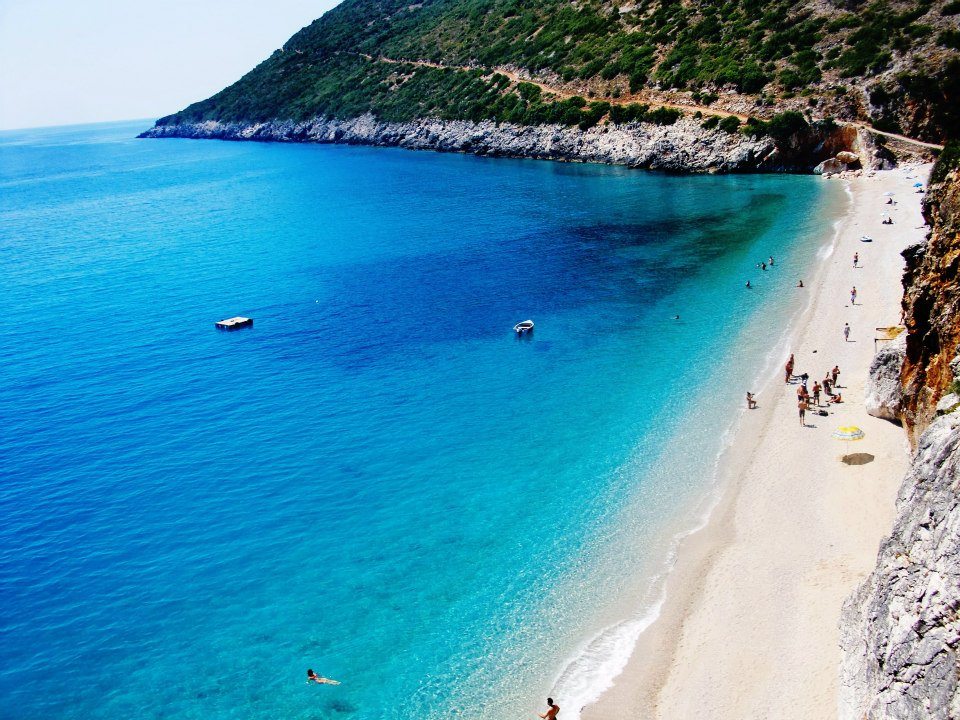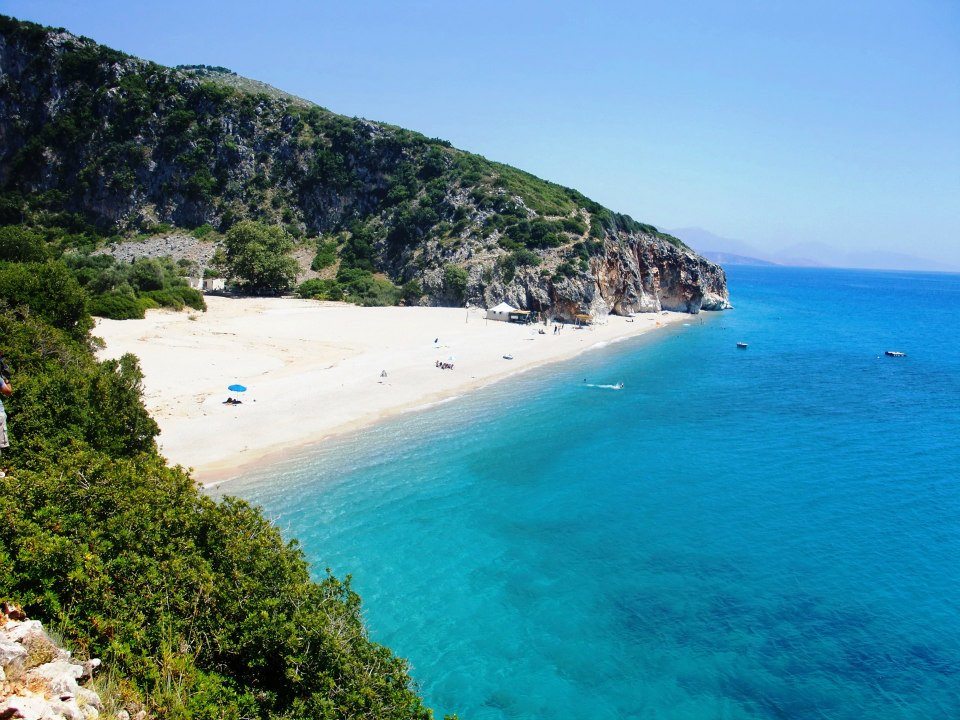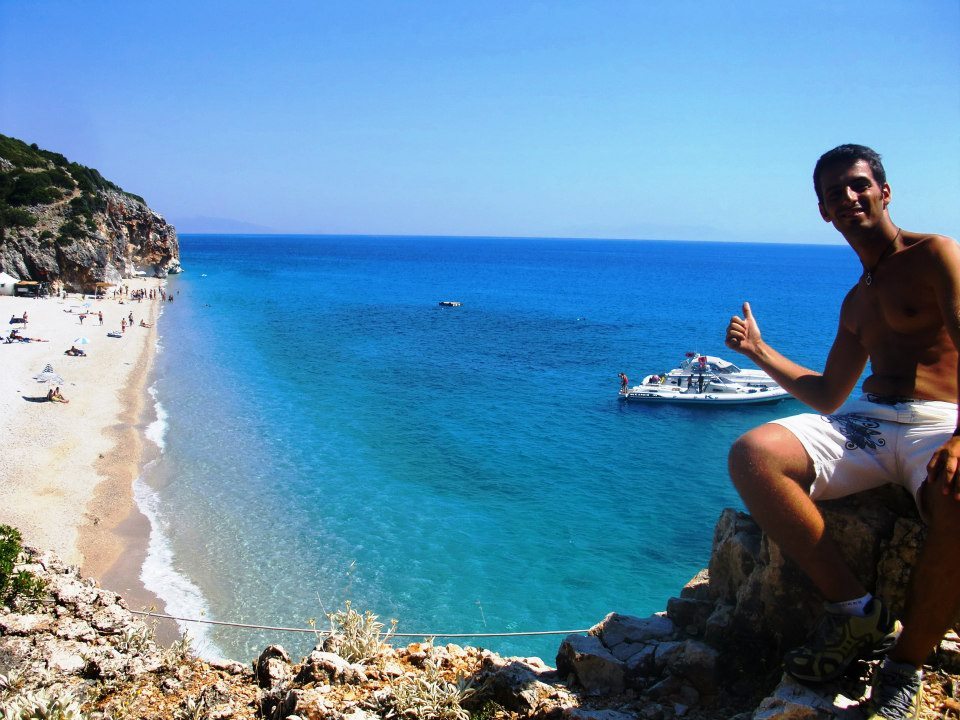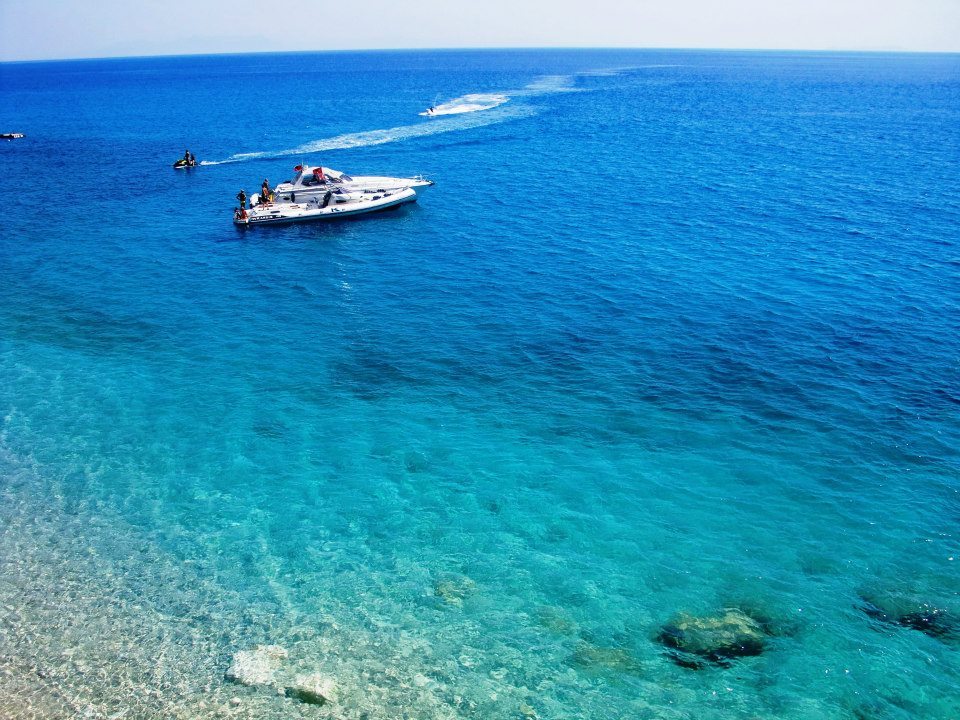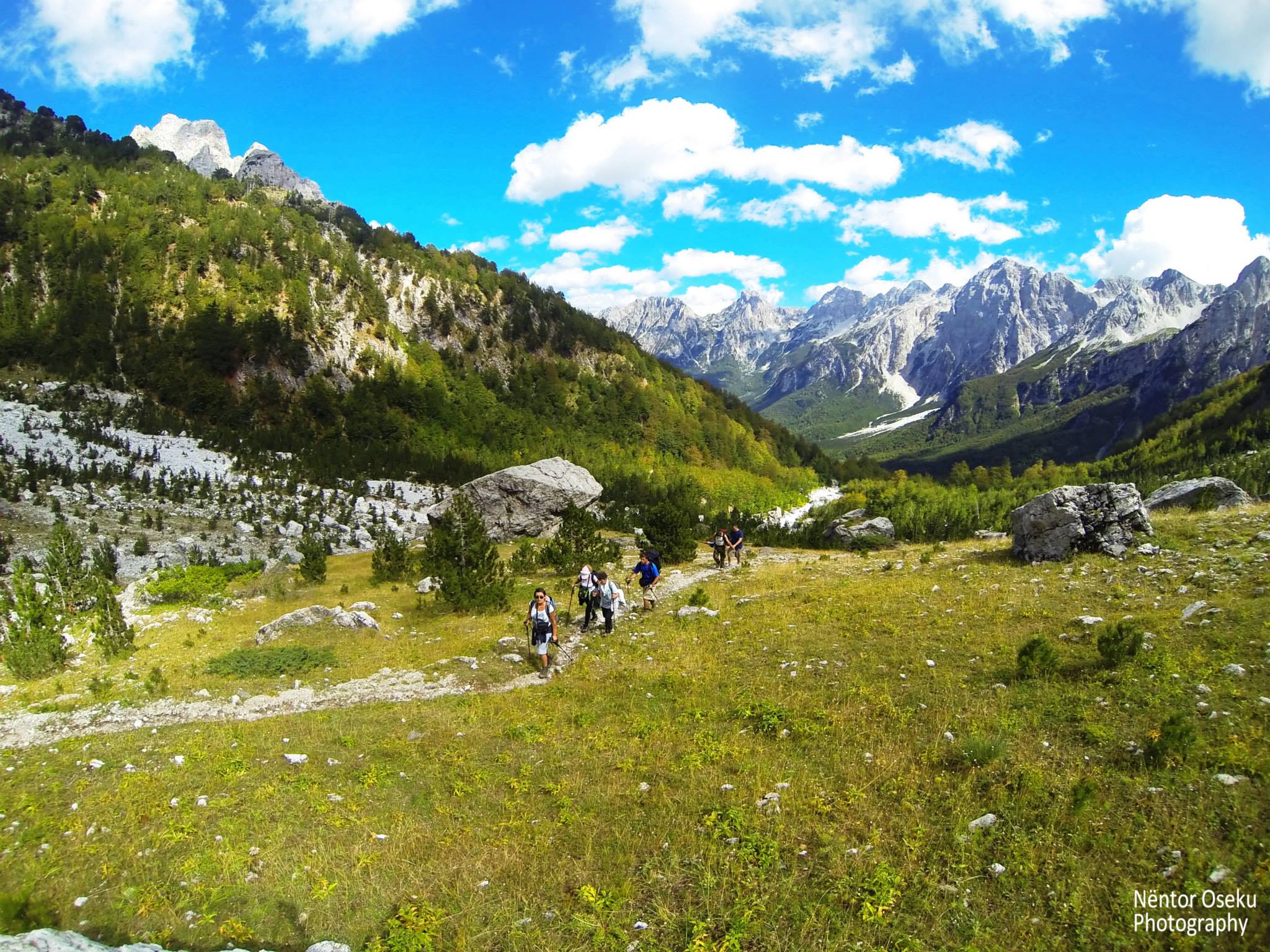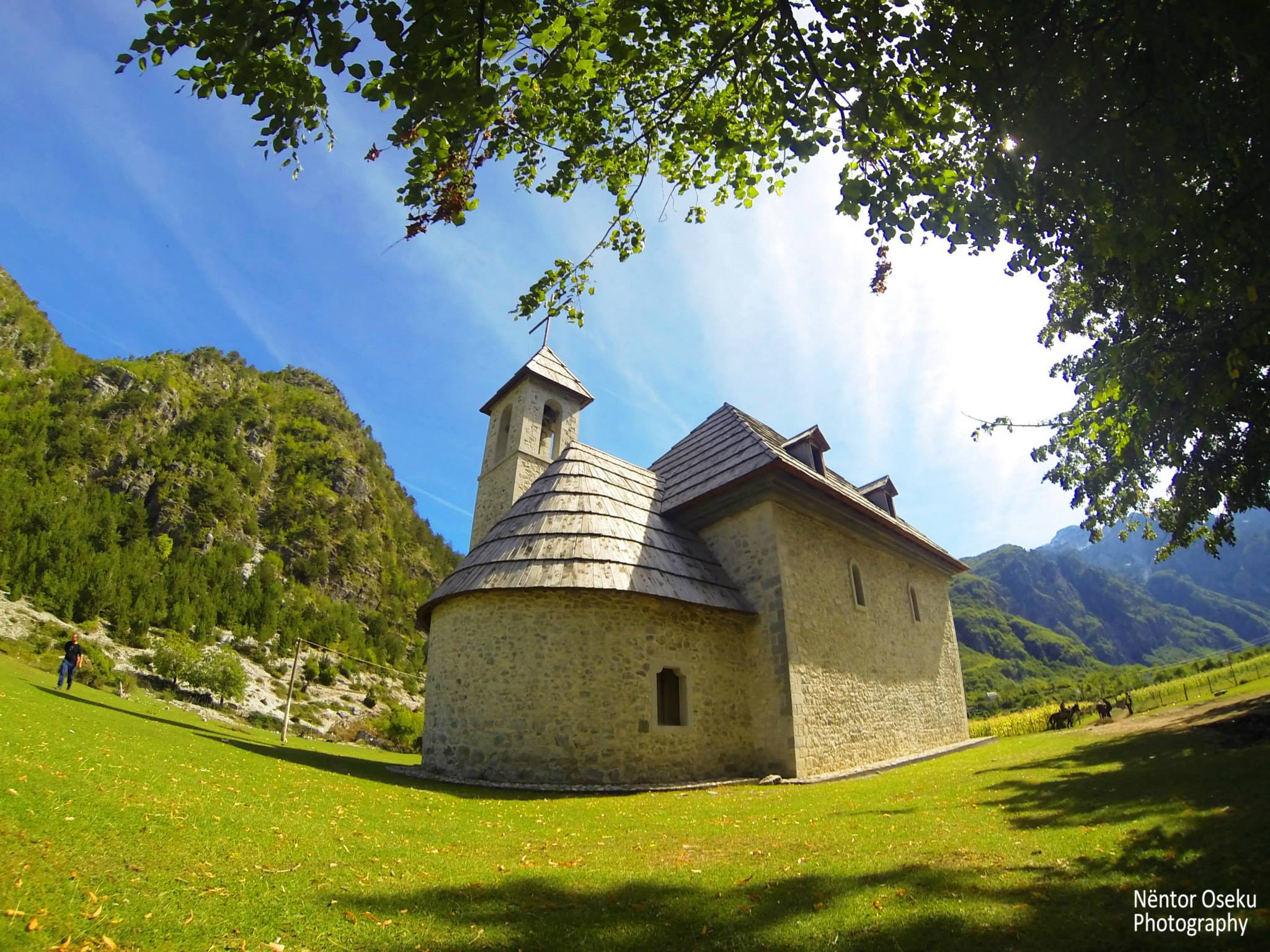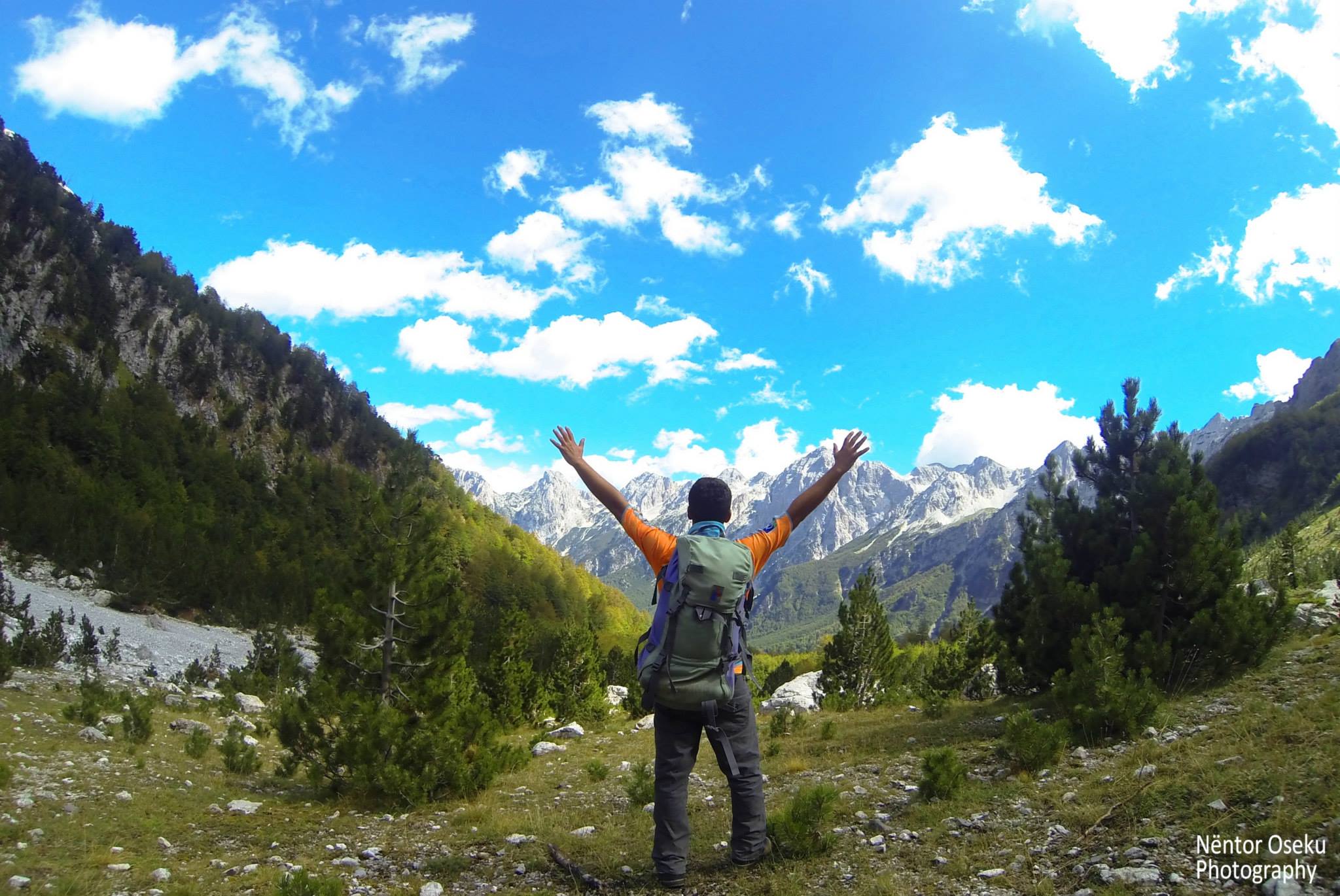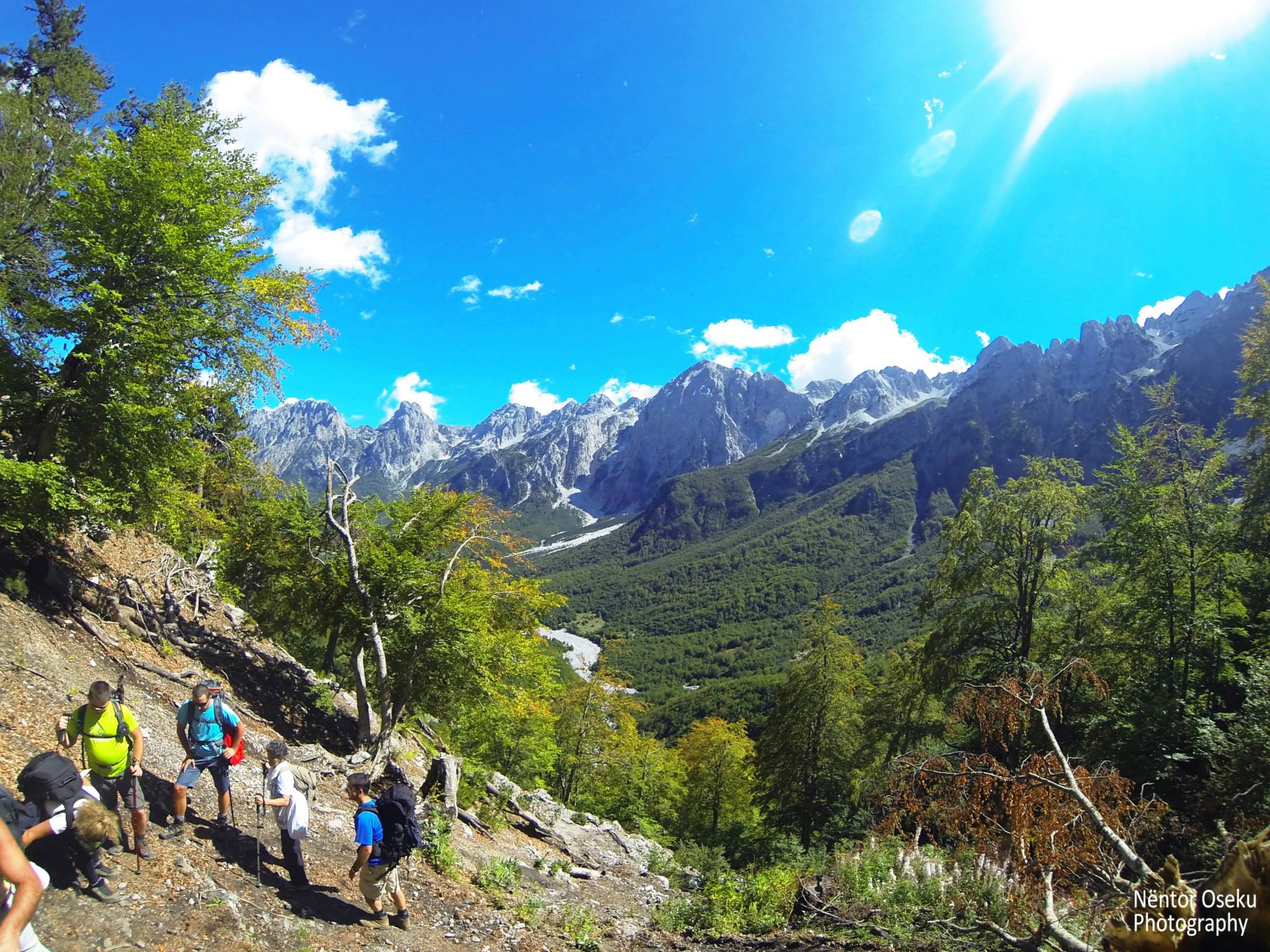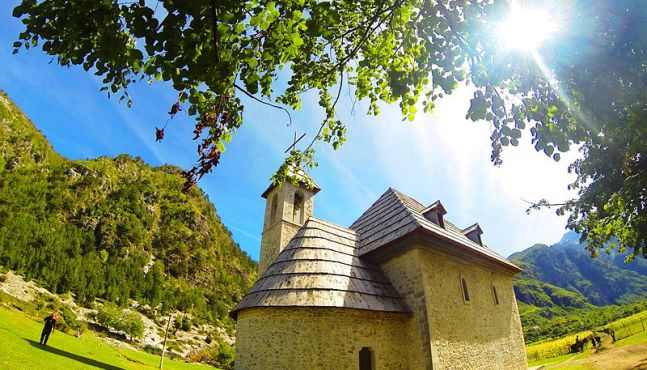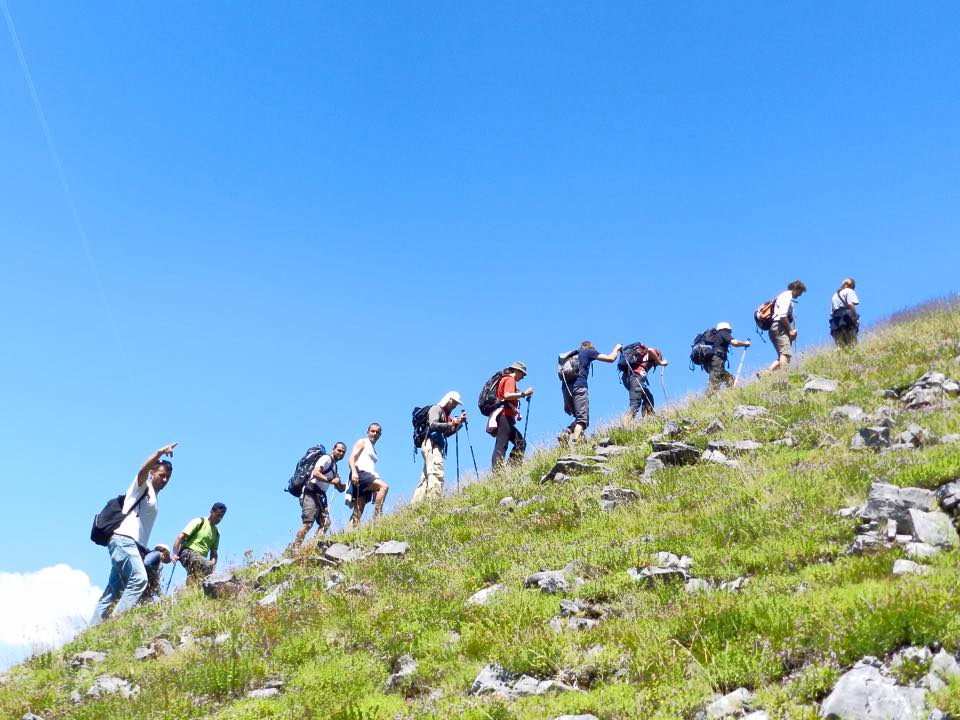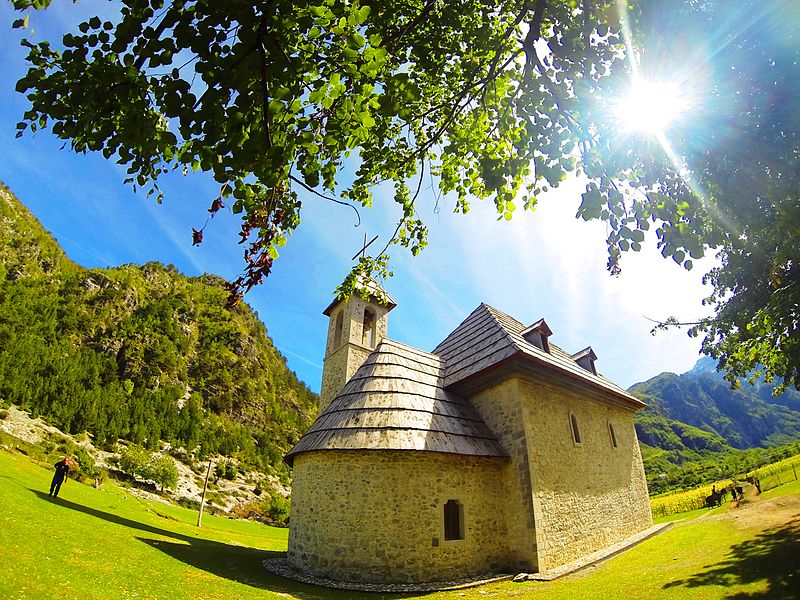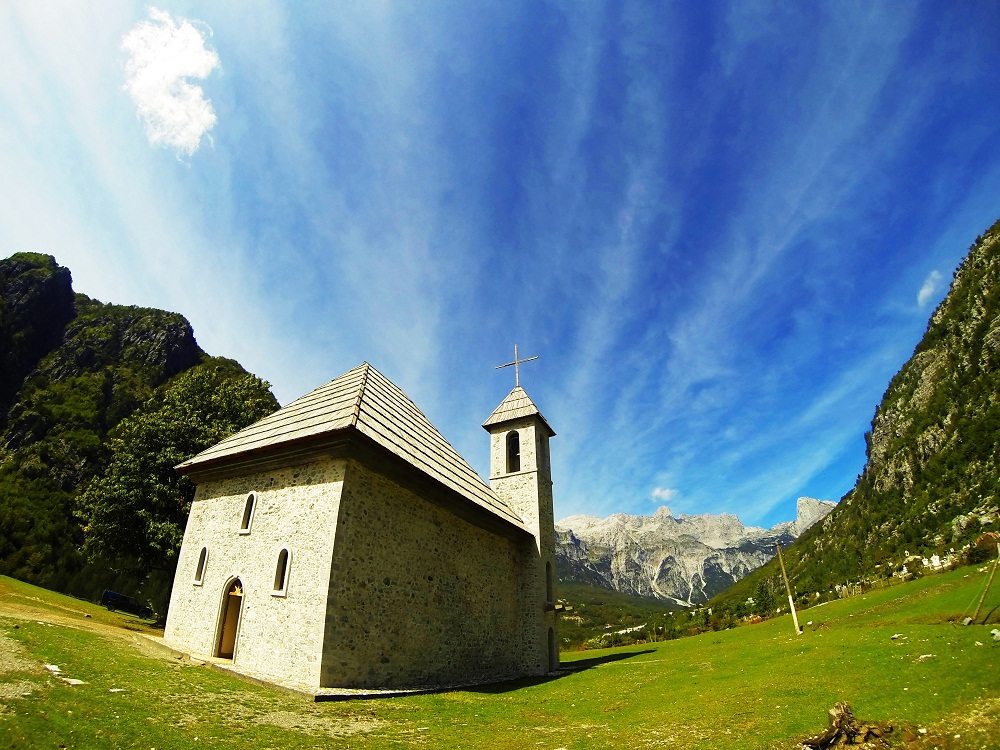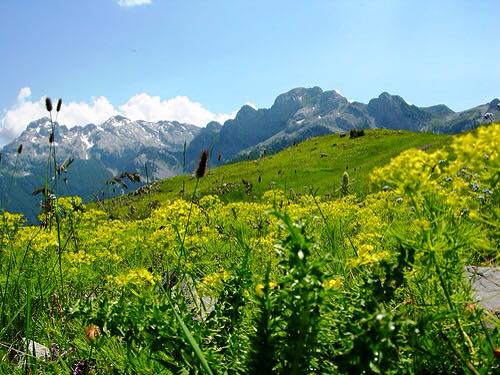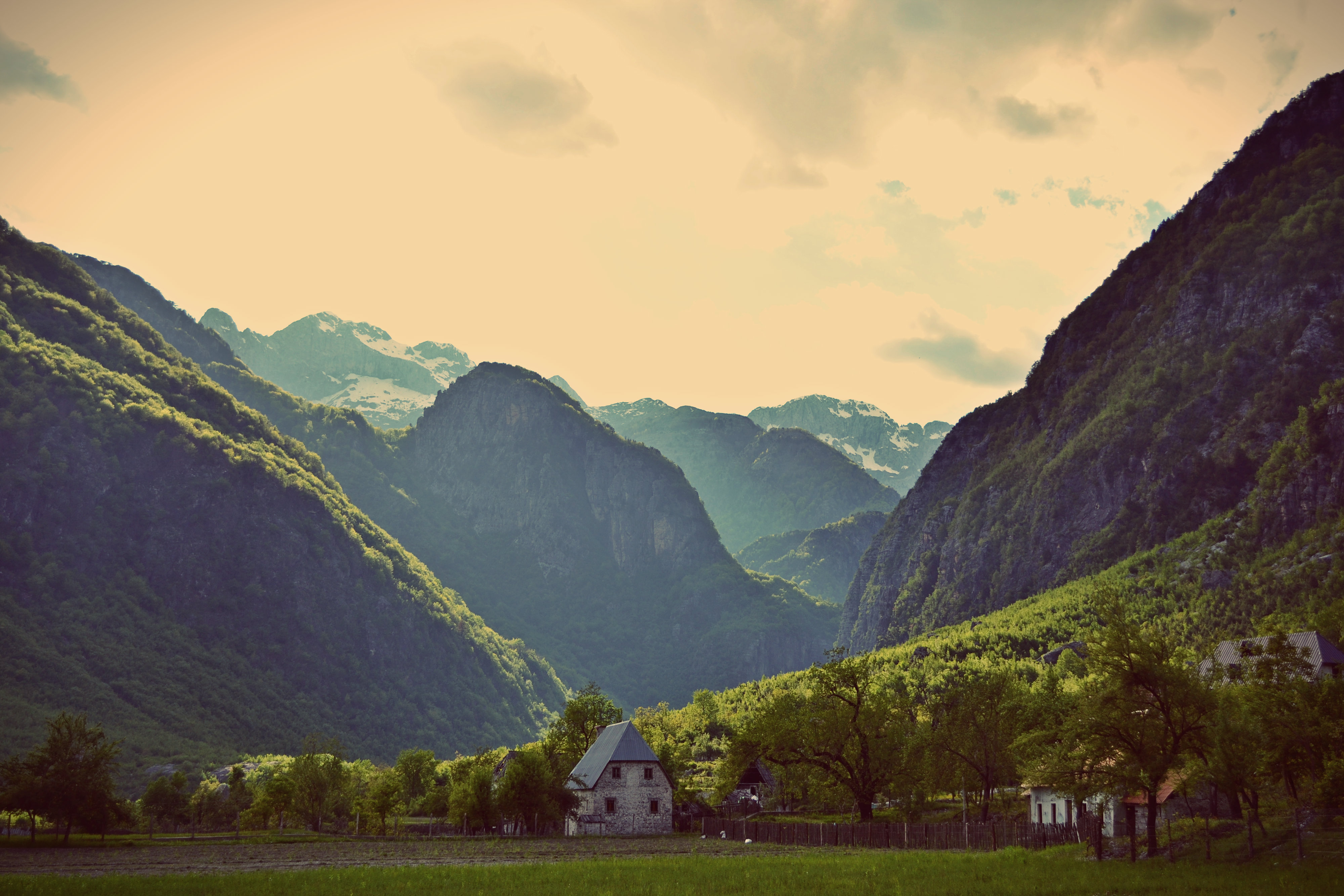(di Cristiana Missori)
(ANSAmed) - TIRANA - Case basse, bianche con larghi finestroni e tetti rossi, incorniciate da tralci di vite e cespugli di rose profumate: lungo le strade strette e tortuose della cittadella del XIV secolo si vendono tessuti ricamati, tovaglie di lino, marmellate e miele della vicina montagna sacra di Tomorr. Qua e là, alcune chiese ortodosse e qualche moschea.
Dalla città di Berat che pare sospesa nel tempo e nello spazio, inizia il viaggio nella cultura e nelle tradizioni dell'Albania centro-meridionale. Esempio di architettura ottomana per la quale nel 2008 si guadagna l'ingresso nella lista dei Beni patrimonio dell'Umanità stilata dall'Unesco, la ''città dalle mille finestre'' custodisce preziose icone in stile bizantino realizzate nel XVI secolo dal maestro Onufri (più importante pittore albanese) ed esposte all'interno del museo a lui dedicato e ospitato nella Chiesa della Dormizione di Santa Maria (realizzata nel 1797 sulle rovine di una chiesa del X secolo). Delle 42 chiese bizantine che esistevano all'interno delle mura della cittadella (o Kala, dall'arabo) oggi ne rimangono soltanto otto. Dalla città dalle mille finestre a quella ''dalle mille pietre'': Argirocastro (che significa fortezza argentata), altro Patrimonio dell'Umanità che racchiude fra le sue mura la culture greca, romana, turca e albanese. Simbolo della città dai tetti in pietra di losa è, come dice il nome stesso, l'imponente fortezza che ogni 4 anni ospita un importante Festival nazionale del Folklore (nato nel 1968) che vede arrivare da tutto il Paese, ma anche dal Kosovo, dalla Macedonia, dal Montenegro, dall'Italia con gli arberesh e dalla diaspora, artisti che fino a oggi grazie ai loro canti polifonici mantengono viva l'eredità culturale e le tradizioni albanesi. I loro testi raccontano storie di eroi contro l'invasore ottomano e canti epici - testimonianza di un fiero spirito di autonomia etnica - e di amore. Lungo la salita che porta al castello, all'intersezione di cinque stradine inizia il cuore della città vecchia, dove ad alternarsi con i caffè tradizionali sono le botteghe di artigianato locale, ceramiche dipinte a mano, tessuti di lana e cotone. Imperdibili, sono le case ottomane appartenute ad alcune famiglie nobili locali. Come palazzo Skenduli, oggi sotto protezione Unesco. Con un pizzico di fortuna a fare visitare le sue stanze affrescate e finemente decorate con intarsi lignei è proprio il proprietario, Saim Skendull, che rappresenta la nona generazione di questo importante casato. Lasciando l'interno del Paese e proseguendo verso Sud per raggiungere il parco archeologico di Butrinto, è possibile fare un salto a Saranda, o anche Porto Edda, come fu chiamata tra il 1940 e il 1944, in onore di Edda Ciano, figlia del Duce.
L'ottimo pesce e la vista sull'isola greca di Corfù per un attimo fanno dimenticare le brutture e gli eco-mostri costruiti praticamente sul mare che fino allo scorso anno spuntavano come funghi. Poco lontano, si trova il sito di Butrinto (circa 18 km da Saranda), che testimonia del passaggio di greci, romani, bizantini, turchi e veneziani, inserito nella lista del Patrimonio Unesco nel 1992. In questo bellissimo parco edifici ellenistici del 4 secolo a.C., tra cui il teatro - in cui vengono regolarmente organizzati balletti e spettacoli - si alternano a resti di templi, fontane, bagni e monumenti funebri di epoca romana e chiese di epoca bizantina, come testimoniano il battistero del VI secolo scoperto nel 1928 dalla missione archeologica italiana guidata da Luigi Maria Ugolini, che rappresenta per grandezza il secondo battistero nell'Impero http://www.ansamed.info/ansamed/it/notizie/rubriche/turismo/2015/06/25/turismoalbania-da-scopriretra-citta-ottomane-e-archeologia_5f4db587-ba1c-4f07-94aa-42c5a48bbaae.html
Dalla città di Berat che pare sospesa nel tempo e nello spazio, inizia il viaggio nella cultura e nelle tradizioni dell'Albania centro-meridionale. Esempio di architettura ottomana per la quale nel 2008 si guadagna l'ingresso nella lista dei Beni patrimonio dell'Umanità stilata dall'Unesco, la ''città dalle mille finestre'' custodisce preziose icone in stile bizantino realizzate nel XVI secolo dal maestro Onufri (più importante pittore albanese) ed esposte all'interno del museo a lui dedicato e ospitato nella Chiesa della Dormizione di Santa Maria (realizzata nel 1797 sulle rovine di una chiesa del X secolo). Delle 42 chiese bizantine che esistevano all'interno delle mura della cittadella (o Kala, dall'arabo) oggi ne rimangono soltanto otto. Dalla città dalle mille finestre a quella ''dalle mille pietre'': Argirocastro (che significa fortezza argentata), altro Patrimonio dell'Umanità che racchiude fra le sue mura la culture greca, romana, turca e albanese. Simbolo della città dai tetti in pietra di losa è, come dice il nome stesso, l'imponente fortezza che ogni 4 anni ospita un importante Festival nazionale del Folklore (nato nel 1968) che vede arrivare da tutto il Paese, ma anche dal Kosovo, dalla Macedonia, dal Montenegro, dall'Italia con gli arberesh e dalla diaspora, artisti che fino a oggi grazie ai loro canti polifonici mantengono viva l'eredità culturale e le tradizioni albanesi. I loro testi raccontano storie di eroi contro l'invasore ottomano e canti epici - testimonianza di un fiero spirito di autonomia etnica - e di amore. Lungo la salita che porta al castello, all'intersezione di cinque stradine inizia il cuore della città vecchia, dove ad alternarsi con i caffè tradizionali sono le botteghe di artigianato locale, ceramiche dipinte a mano, tessuti di lana e cotone. Imperdibili, sono le case ottomane appartenute ad alcune famiglie nobili locali. Come palazzo Skenduli, oggi sotto protezione Unesco. Con un pizzico di fortuna a fare visitare le sue stanze affrescate e finemente decorate con intarsi lignei è proprio il proprietario, Saim Skendull, che rappresenta la nona generazione di questo importante casato. Lasciando l'interno del Paese e proseguendo verso Sud per raggiungere il parco archeologico di Butrinto, è possibile fare un salto a Saranda, o anche Porto Edda, come fu chiamata tra il 1940 e il 1944, in onore di Edda Ciano, figlia del Duce.
L'ottimo pesce e la vista sull'isola greca di Corfù per un attimo fanno dimenticare le brutture e gli eco-mostri costruiti praticamente sul mare che fino allo scorso anno spuntavano come funghi. Poco lontano, si trova il sito di Butrinto (circa 18 km da Saranda), che testimonia del passaggio di greci, romani, bizantini, turchi e veneziani, inserito nella lista del Patrimonio Unesco nel 1992. In questo bellissimo parco edifici ellenistici del 4 secolo a.C., tra cui il teatro - in cui vengono regolarmente organizzati balletti e spettacoli - si alternano a resti di templi, fontane, bagni e monumenti funebri di epoca romana e chiese di epoca bizantina, come testimoniano il battistero del VI secolo scoperto nel 1928 dalla missione archeologica italiana guidata da Luigi Maria Ugolini, che rappresenta per grandezza il secondo battistero nell'Impero http://www.ansamed.info/ansamed/it/notizie/rubriche/turismo/2015/06/25/turismoalbania-da-scopriretra-citta-ottomane-e-archeologia_5f4db587-ba1c-4f07-94aa-42c5a48bbaae.html
RELATED
(ANSAmed) - TIRANA - Albania, the Country of Eagles, is opening up to cultural tourism in a bid to boost another one of the industry's assets beyond the seaside resorts of the Ionian coast, whose landscape has been ravaged by years of mismagement and savage exploitation. From Tirana - with its Fascist-epoch architecture, to Berat "the city of a thousand windows", with its narrow windy alleys, red-roofed white houses, ancient mosques and Orthodox churches decorated with frescoes, from the south, boasting the ancient town of Argirocastro with its stone roofs and facades covered with roses and hundred-year old vines, up to the archaelogical park of Butrinto, a few kilometers from the border with Greece, Albania is ready to welcome tourists and investors.
The path is slow and complicated by the fact that infrastructure - both in terms of accomodation and transport - still needs to be developed in order to make internal travel easier, but things are getting better, Albanian Minister of Tourism, Arben Ahmetaj told ANSAmed.
"Two years ago we were still chasing numbers" he said.
Tourists visiting Albania are mainly Kosovars (38% of arrivals), Macedonians (14%); Greeks (10%), Montenegrins, (6%) and Italians (5%), but we are starting to see visitors from Eastern and Northern Europe aswell". Albania is not targeting any specific type of tourist yet.
''We cannot afford to nitpick the kind of tourists we'd like" admitted Ahmetaj. "What is certain is that we need to improve our infrastructures". There is "a budget of almost 300 million dollars. We are evaluating different projects for the development of port infrastructures, the road system as well as airports".
The only airport available to tourists, at the moment, is the one in Tirana, but there is a plan to build another one in Saranda, in the south. "We are also thinking about another aiport in Valona" together with the option of reactiving the one in Kukes in the north of the country, added Ahmetaj. As of date, the number of hotels in Albania is approximately 728 with a capacity of 29.700 beds, but with regard to sleeping accomodations, categories are not particularly clear cut.
A few weeks ago, a foreign company with expertise in the tourism sector was asked to evaluate, classify and valide Albanian hotel establishments.
Italian investors are welcome, stressed the minister. The sector has so far attracted, for the most part, Greek, Austrian, Turkish and Arab ventures.
The path is slow and complicated by the fact that infrastructure - both in terms of accomodation and transport - still needs to be developed in order to make internal travel easier, but things are getting better, Albanian Minister of Tourism, Arben Ahmetaj told ANSAmed.
"Two years ago we were still chasing numbers" he said.
Tourists visiting Albania are mainly Kosovars (38% of arrivals), Macedonians (14%); Greeks (10%), Montenegrins, (6%) and Italians (5%), but we are starting to see visitors from Eastern and Northern Europe aswell". Albania is not targeting any specific type of tourist yet.
''We cannot afford to nitpick the kind of tourists we'd like" admitted Ahmetaj. "What is certain is that we need to improve our infrastructures". There is "a budget of almost 300 million dollars. We are evaluating different projects for the development of port infrastructures, the road system as well as airports".
The only airport available to tourists, at the moment, is the one in Tirana, but there is a plan to build another one in Saranda, in the south. "We are also thinking about another aiport in Valona" together with the option of reactiving the one in Kukes in the north of the country, added Ahmetaj. As of date, the number of hotels in Albania is approximately 728 with a capacity of 29.700 beds, but with regard to sleeping accomodations, categories are not particularly clear cut.
A few weeks ago, a foreign company with expertise in the tourism sector was asked to evaluate, classify and valide Albanian hotel establishments.
Italian investors are welcome, stressed the minister. The sector has so far attracted, for the most part, Greek, Austrian, Turkish and Arab ventures.

